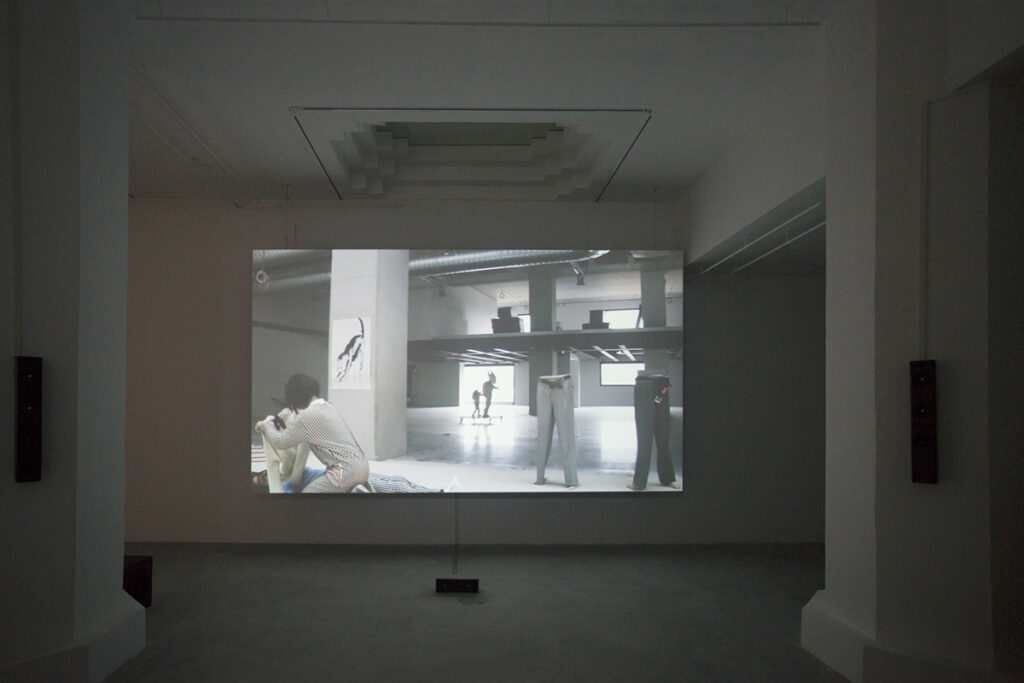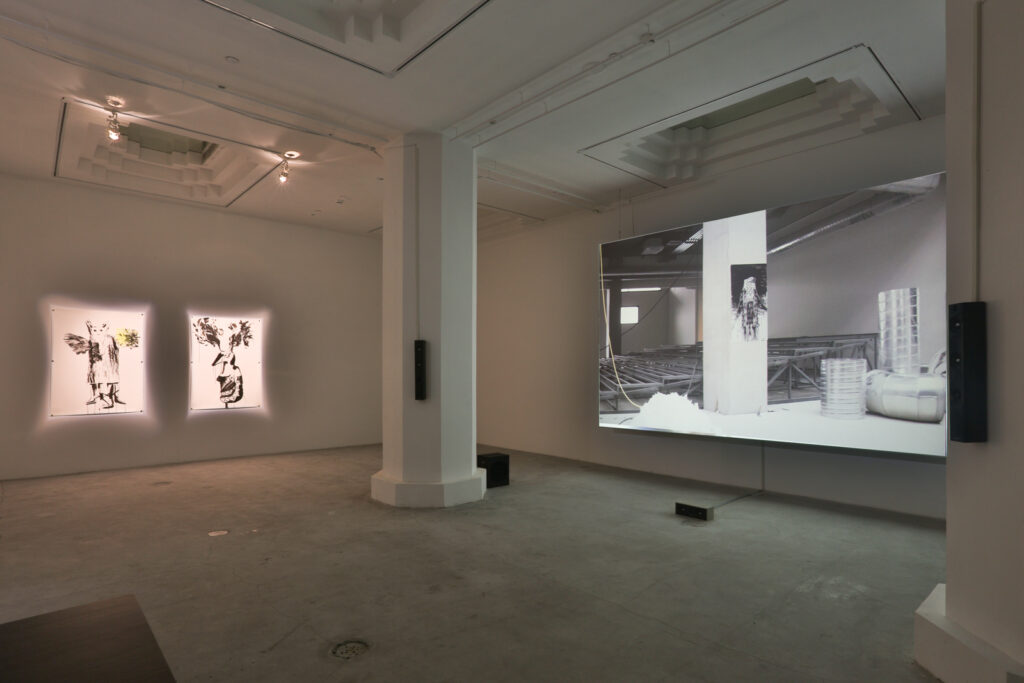Inci Eviner’s works explore the action of continuity and repetition of strange and unsettling movements—caressing, punching, undressing, and people merging—performed by men, women, genderless humans, and even hybrid human-animal beasts. What sets Eviner’s art in this continuous loop is her reproduction and restaging of similar characters and movements inspired by American philosopher and gender theorist Judith Butler’s concept of “performativity”, which is the very act of performing gender that constitutes who we are, for the idea of gender is a historical and social construct and not essential to our sex. Since the act of gender has been rehearsed and practiced by subjects through continual citation or enactment, it can also be challenged and contested through alternative performative acts. This alternative is where Eviner comes in, who is determined to rupture the cultural code by presenting sexually and physically active female bodies that threaten to rise up against the social order, opening up a new territory for freedom.
Eviner focuses on vulnerable and underrepresented groups—teenage girls, migrants, and refugees— who are portrayed in her videos as powerful subjects, like the young girls in Runaway Girls (2015) who run away from home for the sake of love, hoping for a better future and joy by escaping from violence and oppression in a male-dominated society. The tension generated in the video lies in the rotation of a 360-degree camera, which captures figures, some of whom have their faces obscured by cut-out drawings, chasing each other and moving around vigorously, struggling to cope with the camera and the sliding of time. Drawings are torn away from the flatness of paper and become moving images and “actors”, just as the representations of women in art history resist being fixed to a stereotypical gesture or figuration. The “girls” are in restless action in this game, even though the promise of a brighter future is not guaranteed in a circular conception of time. Can they escape? We expect that they do.
Something Bad Happened to Me (2016) is Eviner’s latest video production, made on a stage that she designed herself. She refers to how a theatrical setup and performative approach to her visual lexicon opens up many possibilities for creation and interaction, including enhancing the viewer’s corporeal and sensual experience, while allowing the artist to incorporate choreography. The narrative is simple yet profound; it talks about how a woman’s tongue is thrown into the garbage and will eventually be covered and worn away by centuries of dust. The wounded and bitten flesh, visualised by a performer in a pink costume, straddles between reality and fantasy. The powerful visual language in this video is a
manifestation of Eviner’s “players”, as she calls them, who interpret an abstract set of instructions based on her ink drawings with their own intuition and experimentation. Sometimes, the movements go beyond the limits of human capacity, revealing an almost raw and animalistic sensation in the performance.
Civil movements and social conditions in Turkey motivated Eviner to create art. The flux of a Turkish identity, continuously shaped and reshaped by movements since the 1980s—such as feminist, environmental, anti-military, LGBT, and human rights movements—reflects the East-West paradox of the nation’s geographical location. The situation stemming from clashes of Islamic and Western culture is manifested in Broken Manifesto and Fluxes of Girls in Europe. Broken Manifesto, exhibited at Musée d’Art Moderne de la Ville de Paris in 2010, consists of three videos, “Demonstration”, “Violence”, and “Immigrants”. It portrays protesting dissidents holding placards of Eviner’s ink drawings, belly dancers who cover their heads with shirts (to represent a woman’s veil), and stray dogs in Istanbul, all of which articulate Turkey’s perplexing relationship with the European Union.
Drawing is a starting point and foundation for Eviner, who has repeatedly said, “Everything in art, including the videos, comes from and returns to the process of drawing.” Even her interest in staging and performance derives from the nature of drawing. The level of fluidity in drawing resembles the open field of staging, where the interaction between actor/player generates new dynamics and evolution. The artist takes part in this choreography, letting the emotion and her subconscious guide her to discover new realms of possibilities.
Extracted from Pearl Lam Galleries’ Press Release

